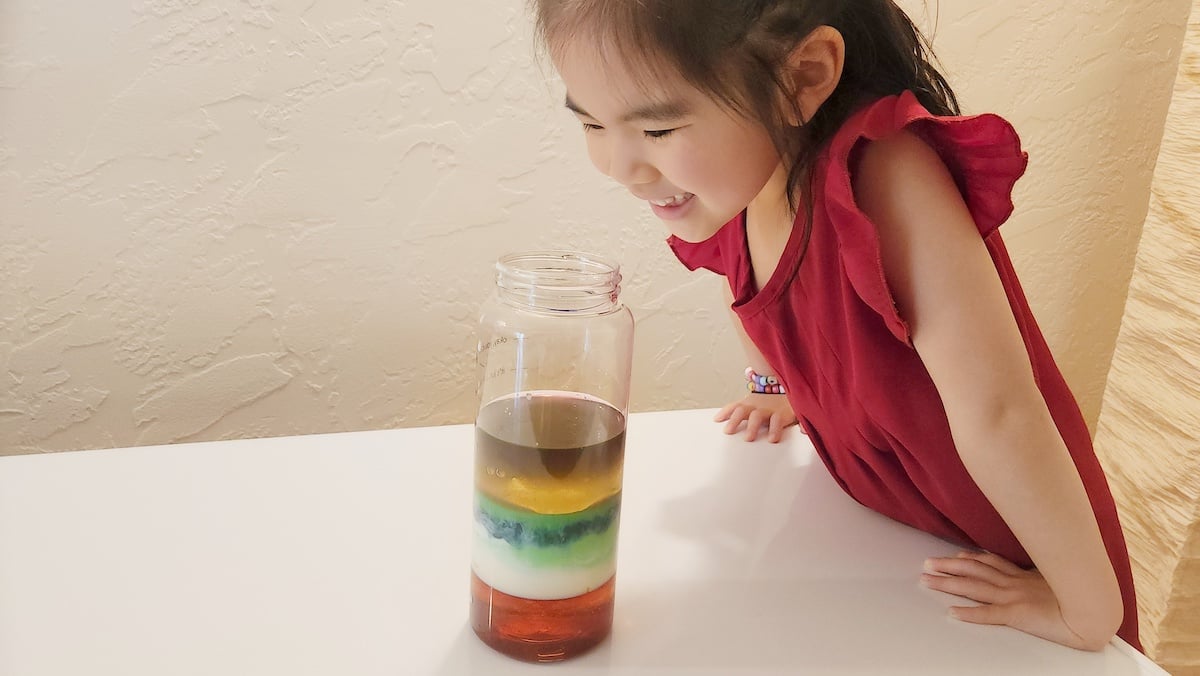Looking for simple STEAM fun at home? We always love educational science experiments that just require a few staples we already have on hand, aren't that messy, and wow the kids.
So we love the idea of this Density Tower, which teaches kids the scientific concept of density in a visually captivating way.
With just a few simple ingredients you likely already have at home, you can create a Density Tower your kids will find fascinating.
@macaronikidnational ✨️ Explore STEAM fun with your kiddos...right in the comfort of your own kitchen! #fyp #foryoupage #kidstiktok #steamactivities #stemtok #stemlife #densitytower #learnontiktok #learnfromme #fypシ ♬ Happy Cute & Playful - Yevhen Lokhmatov
Density Tower
Materials you'll need:
- Honey
- Corn syrup
- Milk
- Dish soap
- Water with food coloring
- Vegetable oil
- Rubbing alcohol with food coloring
- 100% maple syrup
- A clear glass or jar, preferably narrow and large enough to hold all your ingredients
- Patience and curiosity!
Instructions:
- Gather all your materials and set them up on a clean, spacious surface.
- Begin by pouring a few tablespoons of honey into the glass or jar. Explain to your kids that honey is dense and heavy, so it will settle at the bottom.
- Carefully layer corn syrup on top of the honey. Discuss how corn syrup is similar to honey in density.
- Pour in the milk gently, so it floats above the honey and corn syrup layers. Talk about how milk is less dense than honey and corn syrup.
- Add a small amount of dish soap. Watch as it creates bubbles or foam on top of the milk layer. Explain how dish soap is less dense and also has special properties that make it bubble.
- Pour the water with food coloring to form the next layer. Observe how it interacts with the dish soap.
- Slowly pour the vegetable oil to create yet another layer. Discuss how oil is less dense than all the previous layers, so it floats on top.
- Add rubbing alcohol with food coloring to form the topmost layer. Observe the vibrant colors and explain how rubbing alcohol is less dense than the layers below.
The layers of your Density Tower should stay separate as long as the tower is handled gently and not shaken.
Once all your materials are added, your child can add small objects, like beads or buttons, into the layers to see what they do. Do they sink or float?
 |  |
Photos and video by Essy Chen
By the end of this Density Tower experiment, you'll have a stunning density tower with clearly defined layers that demonstrate the concept of density to your children in a fun and engaging way.
Making a Density Tower is a great at-home STEAM opportunity for kids to learn and explore the fascinating world of science ... right in your own kitchen.


